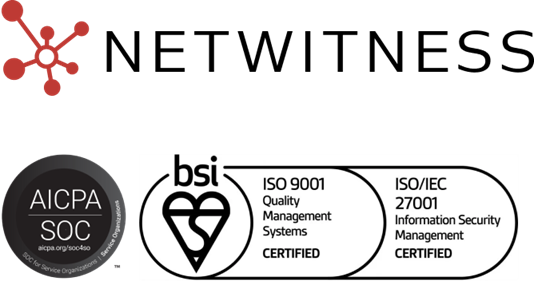What is SIEM Architecture?
SIEM architecture defines how a Security Information and Event Management (SIEM) platform is designed, deployed, and integrated across an organization’s environment. A well-built architecture determines how security data is collected, normalized, analyzed, and presented so analysts can detect and respond to threats in real time. Whether you’re running a small SOC or a global security operation, the architecture of SIEM directly influences visibility, scalability, and detection speed.
At its core, SIEM architecture is the structural blueprint of a SIEM solution, covering data pipelines, analytics layers, and user interfaces. It describes how log data flows from endpoints, servers, cloud workloads, and applications into the SIEM, where it’s parsed, enriched, and correlated for suspicious patterns.
Organizations can choose different deployment models:
- On-premises: Installed in a company’s data center for full control.
- Cloud-based SIEM: Hosted in the cloud for faster scaling and simplified management.
- Hybrid: Combines on-prem infrastructure with cloud analytics.
No matter the model, effective architecture ensures seamless SIEM integration with existing security tools and workflows.
Synonyms
- Next-Gen SIEM Architecture
- Log Management Architecture
- Security Logging Infrastructure
- Centralized Logging Architecture
Why SIEM Architecture Matters
The design of your SIEM directly impacts detection accuracy and operational efficiency:
- Scalability: Handles high-volume log ingestion as data sources grow.
- Performance: Reduces latency so analysts get real-time alerts.
- Cost efficiency: Optimizes storage and compute resources.
- Compliance: Maintains audit trails for standards like PCI DSS or HIPAA.
A weak or outdated architecture can lead to missed alerts, excessive false positives, or ballooning infrastructure costs – issues that put security operations at risk.
Key SIEM Architecture Components
A modern SIEM solution typically includes these building blocks:
- Data Collection Layer: Agents, collectors, or APIs that gather logs and telemetry from endpoints, servers, network devices, cloud services, and SaaS apps.
- Parsing & Normalization: Standardizes varied log formats into a consistent schema, enabling cross-platform correlation.
- Correlation & Analytics Engine: Applies detection rules, threat intelligence, and machine learning to spot suspicious activity.
- Storage & Data Lake: Houses historical logs for compliance reporting and deep investigations.
- Alerting & Dashboards: Surfaces prioritize incidents and visualize trends for analysts.
- Integration Layer: Connects with SOAR platforms, ticketing systems, and third-party SIEM tools to automate response.
These SIEM architecture components work together to transform raw events into actionable security insights.
Deployment Models and Variants
SIEM vendors offer several ways to deploy and manage the platform:
- Cloud-based SIEM: Delivers elastic scaling and reduced hardware maintenance, ideal for distributed teams and dynamic environments.
- SIEM as a Service (SaaS SIEM): A managed service where the provider handles infrastructure, upgrades, and tuning.
- Traditional On-prem: Offers maximum control but requires in-house expertise and hardware.
Choosing among these depends on your data sovereignty needs, budget, and in-house security skills.
Best Practices for Designing SIEM Architecture
To build a resilient and efficient SIEM environment:
- Plan for growth: Design ingestion and storage to handle years of log expansion.
- Use modular integrations: Ensure compatibility with emerging security tools and APIs.
- Optimize rules: Tune correlation logic to cut down on false positives.
- Secure the SIEM itself: Implement role-based access and encryption.
- Visualize the flow: Maintain an up-to-date SIEM architecture diagram to guide future changes.
Following these practices keeps your SIEM solution adaptable as new threats and technologies emerge.
Related Terms & Synonyms
- Cloud-Based SIEM: A deployment model where the SIEM platform runs entirely in the cloud for easier scaling and lower maintenance.
- SIEM Tools: The software solutions used to collect, correlate, and analyze security event data across an enterprise.
- SIEM as a Service: A managed SIEM model where a third party handles hosting, updates, and ongoing tuning.
- SIEM Vendors: Providers that develop and support SIEM solutions, offering different architectures and feature sets.
- SIEM Integration: The process of connecting a SIEM platform with other security tools and data sources to improve visibility.
- Architecture of SIEM: Another way to describe SIEM architecture, emphasizing the structural design.
- SIEM Architecture Diagram: A visual representation showing how data flows and components interact within a SIEM.
- SIEM Architecture Components: The individual layers – collection, analytics, storage, and dashboards, form a complete SIEM environment.
NetWitness provides a flexible SIEM solution built for modern security operations. Its scalable architecture supports cloud-based, hybrid, and on-prem deployments, integrates seamlessly with existing security tools, and delivers advanced analytics for faster threat detection. Explore how NetWitness SIEM can strengthen your organization’s architecture and streamline incident response.
People Also Ask
1. What are SIEM tools?
SIEM tools are software platforms that collect and analyze security events from multiple sources. They combine log management, correlation, and alerting to help security teams detect and respond to threats quickly.
2. What is cloud SIEM?
Cloud SIEM is a deployment model where the SIEM platform runs in a cloud environment. It offers elastic scalability, easier updates, and reduced on-premises maintenance while delivering the same analytics and compliance features as traditional SIEM solutions.




